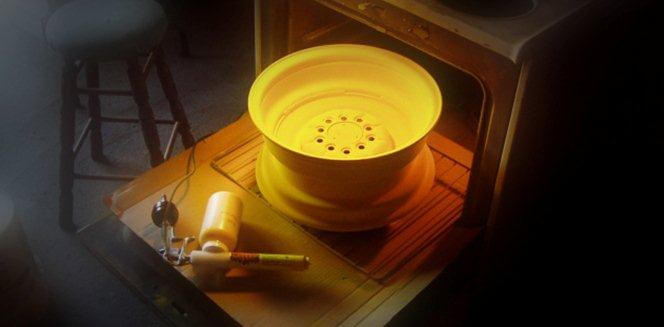Powder Coating Technology Mature to Serve the Need of New Materials & Processes

15 Jul
2016
The Georgia International Convention center this year witnessed experts from the powder coating market from April 11th to 14th. This event was sponsored by the Powder Coating Institute, reveals Allied Market Research. Subject matter experts assessing the increase in growth opportunities and sudden rise in the share and growth explain that the event offered a chance to meet the leading suppliers of the industry and network with the prominent manufacturers. The event at the convention center outlined that the powder coating market has come a long way from what it was a couple of years back. The industry is anticipated to generate $ 12,332 million by 2022. Besides this, the sector is expected to grow at a CAGR of CAGR of 6.3% from 2014 to 2022.
Current Industry Landscape
The powder coating market has been dormant for the past 10 years. The industry saw two recessions, an increase in the off-shore activities and very slim profit pushed the sector in a funk. Research and development budget were either decimated or many experts went out of business. However, in the last five years the powder coating market saw the resurgence for many innovators. Today, technologies are heeding the call to design new methods and materials that serve the needs of the manufacturing units.
Material Developments Transforming the Powder Coating Market
Manufacturing techniques mature rapidly and, not surprisingly, the processes as well as materials to coat the manufactured products are also developing. The introduction of much lighter materials, particularly in the fabrication segment will continue to displace several conventional substrates including aluminum, steel, and others. Thus, there is an immediate need for the growth of coating technology and perfect finish these new materials need. Plastic substrates finally encompass a greater spectrum of techniques and materials. Today, each product poses a unique attribute that influences the technology best suited to preserve the aesthetics and protect the item.
Robotic Application Takes the Powder Coating Market by Storm
The robotic application in the powder coating market has been around for over a decade. However, the recent developments in the design and software enhancements have made the highly expensive technique cost-effective to a wider industry. The high quality or standard units by robotic manufacturer that sell under $49,999 have attracted many mid-range finishers. Besides this, the software required to run the machine is now made more user-friendly. This has completely eliminated the high capital investment on full-time robotic experts and eases the introduction of innovative techniques beyond the OEM finishing shops into custom coating mainstream.
New Technology Effect on Market Becomes Evident
A study conducted by the Powder Coating Institute reveals that the ACE, appliance, as well as automotive manufacturing companies account for approximately 40% of the total powder coating volume in the North American region alone. The coatings are popular in the industries that make ACE components for about a decade now. Coating process is carried out at various certified couture shops using tools approved by OEMs. The automotive engineers have played an active role in the transition of the components conventionally made out of metal castings, compression molded fixtures, and others. This has displaced the powder coating finishing methods with the all new liquid paint methods. So, for the powder coating market to progress in the ACE segment, we would need more low-temperature cure solutions for the plastics substrates.
The appliance sector is considered to be one of the first adopters of the powder coating, which dates back to the 80s. During this time, the industry leaders were busy eliminating high energy consumptive as well as inefficient porcelain enameling techniques. Surveys outline that the coating industry has enjoyed a fair market share due to the increase in demand for appliance coating ever since. The maximum portion of the share has actually been occupied by the coil coating used in laundry and kitchen equipment. Appliance industry replaces different components with molded as well as compressed plastic substrates. In certain cases, the plastics used are high temperature materials that are made conductive with powder coating. Moreover, the lower temperature resistant plastics embrace innovation in the powder coating technology.
Emerging trends in the powder coating market
Powder coating manufacturers focus on the new resin systems that enable the powder to serve the customer specifications for any products. Besides, most of these coatings are now cured at 121°C. In addition, the popularity of low curing temperature solutions including the IR powders, has opened new growth avenues particularly for heat sensitive substrates such as assembled components, wood, and others with heat sensitive information. Metal substrates also benefit from the new technology. This technology has not only lowered energy consumption but has also reduced the investment costs. Higher line speed as well as shorter curing times is some of the other advantages offered by the new technology.
Manufacturers also develop powder coatings for high-temperature applications. The adoption rate of silicone-based coating on products that are expected to retain their shape, surface protection, and adhesion even after an exposure to a temperature of about 538°C gains popularity. Some of the finest examples of these products are light fixtures, charcoal grills, exhaust components, and others. These trends will keep the future of the industry bright for years to come.
The materials and techniques used in the manufacturing units experience a dramatic shift. Traditional mental bending and extrusion is now replaced by the injection molding technique and pultruding. Powder coating techniques will have to mature to fulfil the requirements of the new processes and advanced materials. The high-temperature resistant plastics including the PEEK, Nylon and others can now be minimally coated with less process modifications. Industry experts believe that it will need much greater efforts to manufacture quality powder materials that can be applied on the commodity type plastics. Material researchers operate diligently to make this concept a reality soon.

Akhilesh Prabhugaonkar
Author's Bio- Akhilesh Prabhugaonkar holds a bachelor’s degree in Electronics Engineering from the reputed Vishwakarma Institute of Technology. He has a special interest in the fields of forensics, world history, international relations and foreign policy, sports, agriculture, astronomy, security, and oceanography. An ardent bibliophile and melophile, Akhilesh loves to write on topics of his interest and various other societal issues. This love for writing made him enter the professional world of content writing and pursue his career in this direction.
Avenue: Entire Library membership of Allied Market Research Reports at your disposal
- Avenue is an innovative subscription-based online report database.
- Avail an online access to the entire library of syndicated reports on more than 2,000 niche industries and company profiles on more than 12,000 firms across 11 domains.
- A cost-effective model tailored for entrepreneurs, investors, and students & researchers at universities.
- Request customizations, suggest new reports, and avail analyst support as per your requirements.
- Get an access to the library of reports at any time from any device and anywhere.
Related Post
-
How are Submarine Cables Transforming Global Connectivity with Enhanced User Experience?
-
Endoscopy Procedures: Transformations in Techniques and Applications
-
AI-Powered Video Analytics: How the Product Actually Works for enterprises
-
Painting Robots: Transforming Precision Coating and Creative Applications
-
Innovations in Pharmacovigilance Systems Advancing Patient Safety
-
Understanding Edge Security: Keeping Data Safe Near the Source
-
Exploring the Use and Advancements of 3D Laser Scanners in Professional Applications
-
Reinforcing Industrial Controls with Smarter Tools and Training








